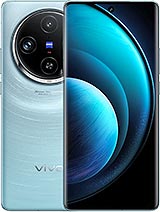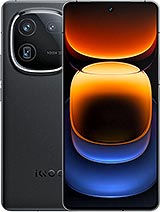nubia Red Magic 9 Pro review

Synthetic benchmarks
The Red Magic 9 Pro isn't the first Snapdragon 8 Gen 3-powered smartphone coming to our office, so we know what to expect. It's marketed to offer 30% performance gains while being 20% more efficient than its predecessor, the Snapdragon 8 Gen 2. It's still based on the 4nm manufacturing process from TSMC.

The eight-core processor inside is highlighted by 1x Cortex-X4 prime core running up to 3.3 GHz, 5x performance Cortex-A720 based cores at up to 3.2 GHz, and 2x efficiency Cortex-A520 based cores clocked up to 2.3 GHz. It is a four-cluster processor with 1+3+2+2 structure.
The Snapdragon 8 Gen 3 and its new Adreno 750 GPU can deliver 'console-defying' gaming with 240 fps support on 240 Hz displays. Adreno Frame Motion Engine 2.0 can generate frames for smoother playback, and there's Unreal Engine 5.2 support. The GPU is 25% faster, 25% more power efficient, and brings 40% better Ray Tracing compared to the Adreno 740 inside the SD8G2.

AI is front and center in the Snapdragon 8 Gen 3. It all starts with the AI Engine, which supports multi-modal generative AI models and popular large language models for speech recognition - the chip can run up to 20 tokens per second for instant AI assistant responses. Qualcomm boasts that the Snapdragon 8 Gen 3 packs the world's fastest stable diffusion, which can generate an image in a fraction of a second. AI enhances the camera's abilities as well. For example - Semantic Segmentation can enhance the vibrancy and detail of images in real-time, while Night Vision video can brighten a dark scene.
There's LPDDR5x memory support up to 4800 MHz and as much as 24 GB. The chip supports Wi-Fi 7 up to 6 GHz, including 802.11be, 802.11ax, 80211ac, and 80211a/bg/n. The chip features the X75 5G modem with both sub-6 GHz and mmWave antennas.
Speaking of memory, the handset comes in 8GB/256GB, 12GB/256GB and 16GB/512GB configurations. For the record, we have the latter version in our office. The storage is, of course, UFS 4.0.
Now let's see how the Snapdragon 8 Gen 3 inside the Red Magic 8 Pro performs.
It's no surprise to see the Snapdragon 8 Gen 3 topping most of the charts but we were surprised to see the SoC trading blows with the Dimensity 9300-powered vivo X100 Pro in the single-core scenarios. Also, the Red Magic 9 Pro is outperformed by the iPhone Pro Max with its Apple A17 Pro chipset in both single and multi-core tasks. The difference is quite obvious in the multi-core test.
However, when it comes to pure GPU performance and combined performance, the Snapdragon 8 Gen 3 is the new king. Notably, the system was locked at 60 fps in the onscreen benchmark tests, so we suggest that you compare the 3DMark offscreen scenarios.
All in all, the key takeaway is that the Red Magic 9 Pro outperforms most smartphones out there in short benchmark tests and utilizes the Snapdragon 8 Gen 3 to the fullest. Let's see how it performs under prolonged loads, though.
Cooling system and sustained performance
Nubia is once again updating the cooling system of its Red Magic lineup and this time around it's called ICE 13 cooling system. It promises 18 °C lower thermals thanks to its newly designed vapor chamber and cooling fan.

The handset features a 10-layer cooling solution with a large vapor chamber located under the display, 10182mm2 in size.
The newly designed system offers straighter airflow for the cooling fan, which leads the hot air out without letting it sit centrally around the CPU.
Additionally, the fan is now more powerful and spins at 22,000 RPM, up from 20,000 RPM and it's quieter now. We can confirm that it's a tad more silent than its predecessor.
Unfortunately, though, we found the cooling system to be worse than the previous generations. After an hour-long CPU stress test, the Snapdragon 8 Gen 3 throttled down to about 65% of its theoretical performance within the first 10 minutes of the test and was able to maintain stable clock speeds either. For comparison, the Red Magic 8S Pro maintained 77% of its performance without the cooling fan.


CPU stress test without fan: 30 min • 60 min
Turning on the cooling fan at maximum speed significantly reduces the internal heat and lets the CPU breathe a little. As you can see, the CPU still dips below 70% but it's able to maintain higher clock speeds overall. Still, we find the clocks a bit unstable - notice the apparent fluctuations on the graph.


CPU stress test with fan: 30 min • 60 min
Sadly, the device wasn't able to pass the 3DMark Wild Life GPU stress test. It overheated before it was able to complete a full 20-minute cycle, with or without the cooling fan.
Even though the device maintains rather good performance considering the demanding flagship SoC, it's surprising that the 9 Pro can't handle any prolonged loads.
High refresh rate gaming performance
Historically, HRR gaming on Android is a hit or miss. Mostly a "miss". So it's no surprise that most games we've tried are capped at 60fps and can't utilize the full potential of the 120Hz display. We used Android's built-in screen refresh rate counter and Game Space's FPS counter to see which games actually reach more than 60fps.

While the phone forced some titles at 120Hz, most were stuck at 60fps, including PUBG Mobile, Genshin Impact, Mobile Legends, Asphalt 9, etc.
Some games were compliant, though. Call of Duty got up to 90fps while Air Force 1945, Sky Force: Reloaded and Real Racing 3 saturated the 120Hz display. We double-checked using the Game Space FPS counter and Android's built-in refresh rate counter.
Reader comments
- matt
- 14 Dec 2024
- JKR
aint nobody using it with locked phone, u jus being weird
- Anonymous
- 07 Oct 2024
- sxs
100%








